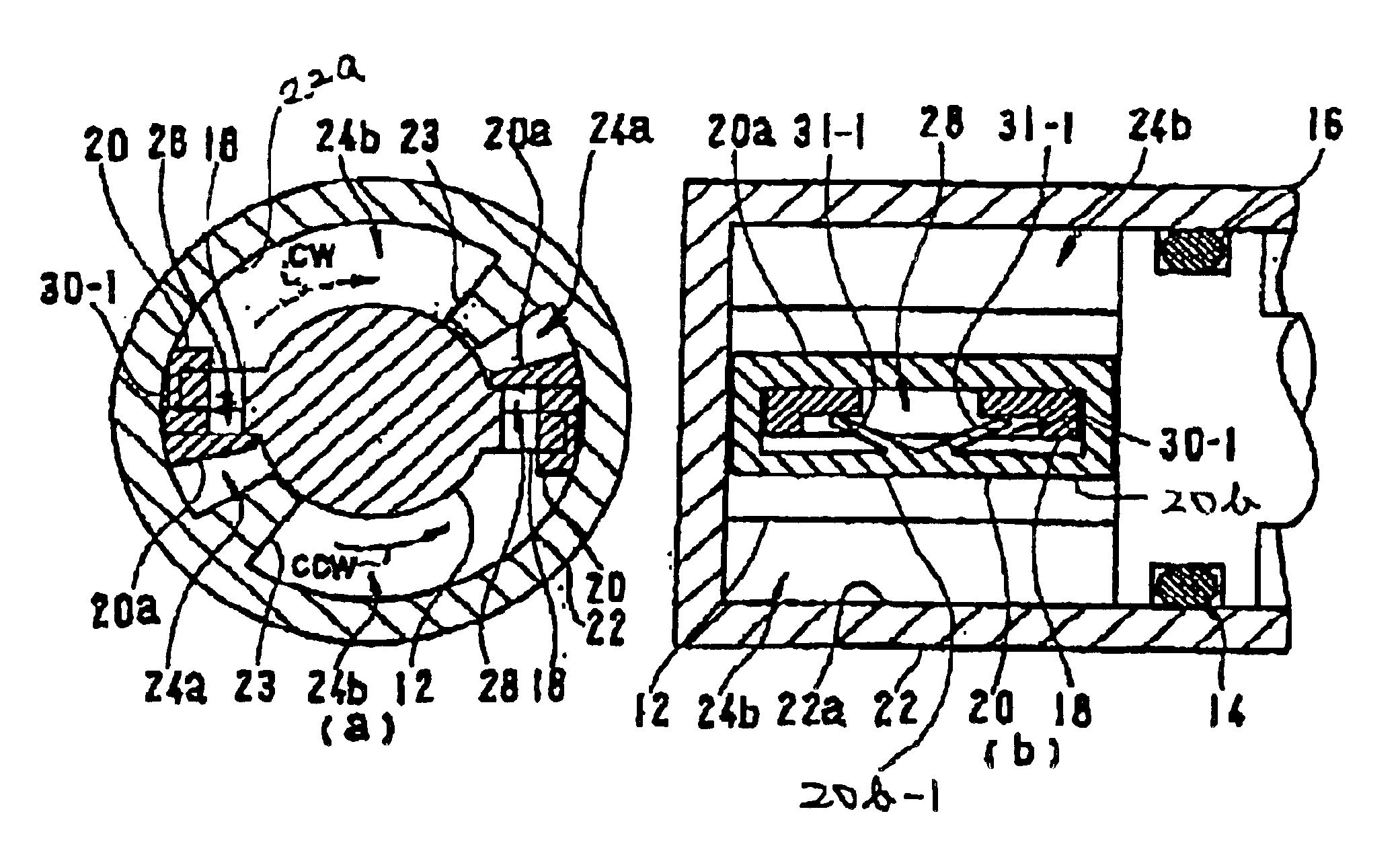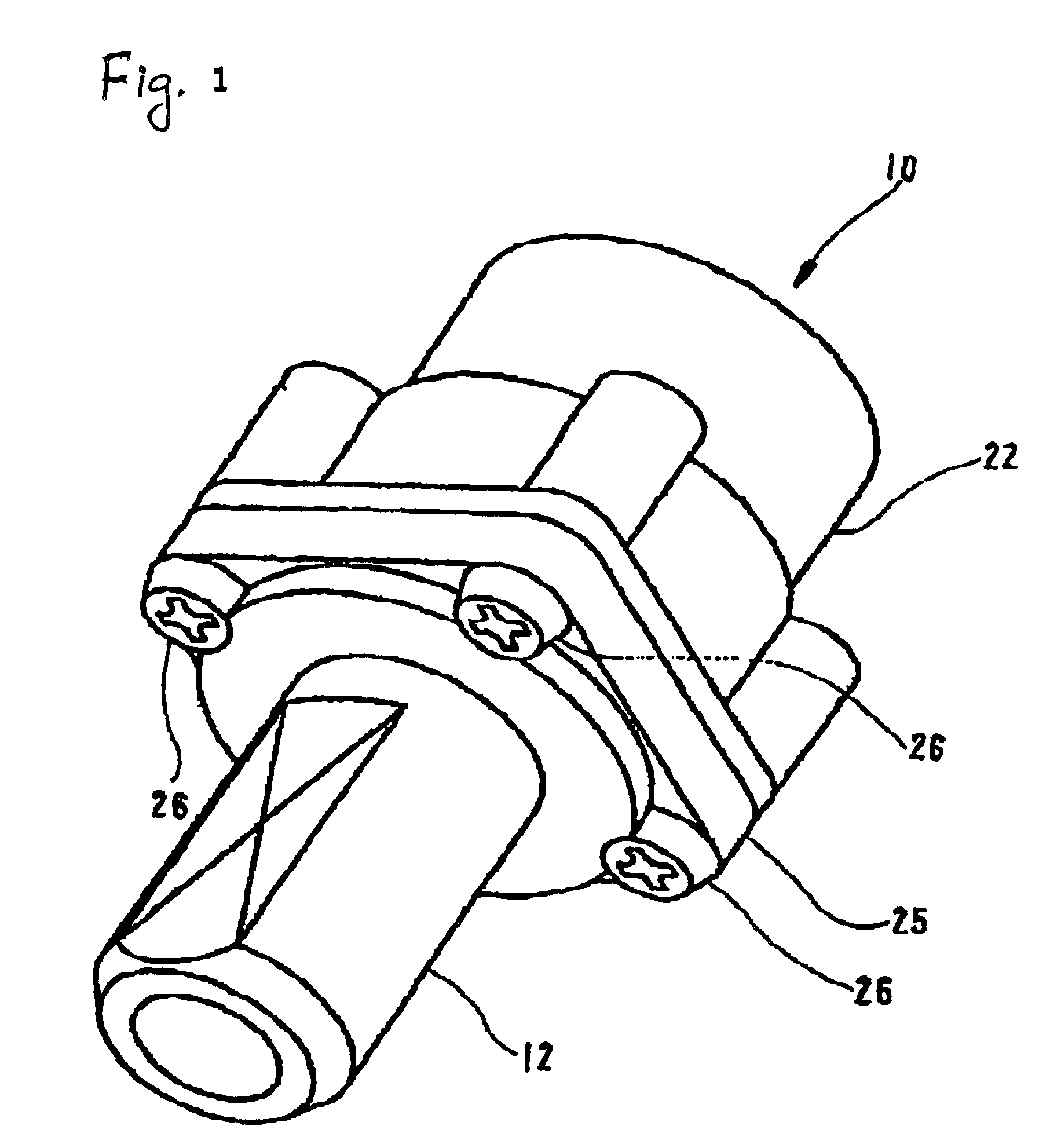Rotary damper device
a damper device and rotary technology, applied in the direction of shock absorbers, manufacturing tools, wing accessories, etc., can solve the problems of inability to solve the problem affecting the operation of the check valve, and the toilet seat may collide with the toilet stool bowl, etc., to achieve the effect of preventing a slip angle (backlash), quick operation of braking or damper function, and simple constitution
- Summary
- Abstract
- Description
- Claims
- Application Information
AI Technical Summary
Benefits of technology
Problems solved by technology
Method used
Image
Examples
first embodiment
The elastic protrusion parts 30-1 are formed in a V-shaped leg section 31-1 as a first embodiment and so constituted that the end parts are abutted and pushed against the wall face of the rotation vane 18 even at a stopping state. Therefore, at a stopping state when a rotating operation is not executed, the frame connecting part 20b-1 is positioned apart from the rotation vane 18 by the elastic force of the elastic protrusion parts 30-1. As a result, the opposing face part 20a of the check valve 20 is positioned to close the oil passage 28. On the contrary, even though the opposing face part 20a does not completely dose the oil passage 28 at a stopping state, the operation can be satisfactorily performed because the slip angle is extremely reduced. In other words, at a stopping state, it is not necessary for the tip ends of the elastic protrusion parts 30-1 to press the wall face of the rotation vane 18. The tip ends of the elastic protrusion parts 30-1 may be constituted so as to o...
second embodiment
Alternative examples of the elastic protrusion parts 30-1 are shown in FIG. 5. FIG. 5(a) shows a second embodiment in which an elastic protrusion part 30-2 is formed in a T-shape instead of the V-shaped leg section 31-1. The frame connecting part 20b-1 connecting both end parts of the frame body 20b is formed on the opposite side to the opposing face part 20a. The T-shaped elastic protrusion part 30-2 is formed by integral molding in such a manner that two arms 31-2 are horizontally extended on the right and left sides from the center of the frame part 20b-1. When the rotation vane 18 is moved in the slipping direction, the rotation vane 18 abuts against the tip ends of the arms 31-2 to cause the elastic deformation of the arms 31-2 by the flowing pressure of the oil for allowing the fluid to flow through the oil passage 28.
third embodiment
FIG. 5(b) shows a third embodiment in which an elastic protrusion part 30-3 is formed in an arch-shape. The oil passage 28 formed on the tip portion of the rotation vane 18 is formed as an opening hole, which is different from the notch in the above-mentioned embodiment. The upper part above the opening hole of the rotation vane 18 abuts against the tip end of the arch part 31-3 of the elastic protrusion part 30-3 which causes the elastic deformation of the arch part 31-3. In other words, the arch part 31-3 bends a little in a somewhat flat shape.
FIG. 5(c) shows a fourth embodiment in which an elastic protrusion part 30-4 is formed in a two-bar shape, i.e., in a truncated chevron shape. The elastic protrusion part 30-4 is formed so as to oppose the rotation vane 18 as the third embodiment, small protrusions 31-4 in the truncated chevron shape are brought into contact with the upper part above the opening part of the rotation vane 18,
As described above, the damper device according to...
PUM
 Login to View More
Login to View More Abstract
Description
Claims
Application Information
 Login to View More
Login to View More - R&D
- Intellectual Property
- Life Sciences
- Materials
- Tech Scout
- Unparalleled Data Quality
- Higher Quality Content
- 60% Fewer Hallucinations
Browse by: Latest US Patents, China's latest patents, Technical Efficacy Thesaurus, Application Domain, Technology Topic, Popular Technical Reports.
© 2025 PatSnap. All rights reserved.Legal|Privacy policy|Modern Slavery Act Transparency Statement|Sitemap|About US| Contact US: help@patsnap.com



